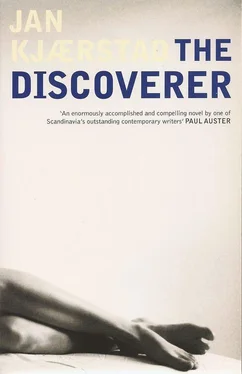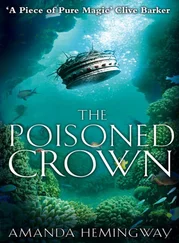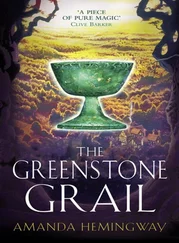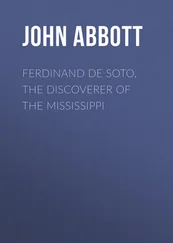Jan Kjaerstad - The Discoverer
Здесь есть возможность читать онлайн «Jan Kjaerstad - The Discoverer» весь текст электронной книги совершенно бесплатно (целиком полную версию без сокращений). В некоторых случаях можно слушать аудио, скачать через торрент в формате fb2 и присутствует краткое содержание. Год выпуска: 2009, Издательство: Arcadia Books, Жанр: Современная проза, на английском языке. Описание произведения, (предисловие) а так же отзывы посетителей доступны на портале библиотеки ЛибКат.
- Название:The Discoverer
- Автор:
- Издательство:Arcadia Books
- Жанр:
- Год:2009
- ISBN:нет данных
- Рейтинг книги:5 / 5. Голосов: 1
-
Избранное:Добавить в избранное
- Отзывы:
-
Ваша оценка:
- 100
- 1
- 2
- 3
- 4
- 5
The Discoverer: краткое содержание, описание и аннотация
Предлагаем к чтению аннотацию, описание, краткое содержание или предисловие (зависит от того, что написал сам автор книги «The Discoverer»). Если вы не нашли необходимую информацию о книге — напишите в комментариях, мы постараемся отыскать её.
The Discoverer — читать онлайн бесплатно полную книгу (весь текст) целиком
Ниже представлен текст книги, разбитый по страницам. Система сохранения места последней прочитанной страницы, позволяет с удобством читать онлайн бесплатно книгу «The Discoverer», без необходимости каждый раз заново искать на чём Вы остановились. Поставьте закладку, и сможете в любой момент перейти на страницу, на которой закончили чтение.
Интервал:
Закладка:
And as Henrik Ibsen raised his head, the whole scene opened out. In a stunning dissolve, Jonas Wergeland had the surroundings change from the hall of the Mountain King to the interior of a church, St Peter’s Basilica itself. Through Ibsen’s eyes one gazed straight up at Michelangelo’s breathtakingly high dome. A ray of light streamed down on him, and to viewers at home it seemed that the light alone brought the writer to his knees.
Jonas Wergeland held this shot for a long time, an eternity in viewers’ memories: Henrik Ibsen, the greatest of all Norwegian writers, on his knees under that vast dome, that prodigiously ambitious span, on his knees before the papal altar, under Bernini’s bronze canopy, right next to the steps leading down to the tomb of St Peter, the rock on which the whole Christian church was founded, while all around him the light grew stronger and stronger. It was a provocative image, an image which, for many, accorded badly with the Ibsen they knew: a stubborn, antagonistic character who could not write unless bristling with resentment. But to Jonas Wergeland, this was where all of Ibsen’s future masterpieces had their beginnings: with him kneeling, humbly, under a cupola, in a church.
According to the programme’s version of events, Henrik Ibsen was, at this point, a disheartened man, plagued by thoughts of betrayal in his life and his art; a man who, in sitting in judgement on himself, was bound to find himself guilty. But on his knees under the dome of St Peter’s, under the image of the Almighty himself, he met with compassion, or rather: he was granted — like a gift for which he had not asked — forgiveness; he was set free. Brand was in all ways a reflection of this experience. Just as Ibsen had sacrificed a woman, Else Sophie from Grimstad, and the child he had with her, so too Brand sacrificed, ruthlessly, tragically, his wife and his son, and yet Ibsen concludes the play with a last line proclaiming: ‘He is deus caritatis !’ He is the God of love.
In St Peter’s, Ibsen found a light, a relief and a release which also rendered him receptive to the inspiration and, hence, the creativity which great art can bestow. The barbarians came to Ancient Rome and were civilised. So, too with Henrik Ibsen. Brand — the new, revised, visionary play, that is — was in many ways a response to the works of art in St Peter’s. Most of all to the dome. Michelangelo’s mighty vault gave Ibsen courage, the courage to give his imagination wing. To go out on a limb. The courage to go against the accepted taste, the courage to do something crazy. To say: On the contrary. All or nothing. The works of art in that church, and everywhere else in Rome, did not merely provide him with a new yardstick, they also prompted him to ask himself another question: what is a man. It was here, in St Peter’s Basilica, that Ibsen made up his mind to be a person who asked questions rather than one who answered them. It was here that he began to perceive the possibility of depicting people as no one before him had done.
Through Ibsen’s eyes, television viewers saw him discover the key to his future works. Looking up, he caught sight of the four large mosaic medallions at the four corners of the dome: the four evangelists, four writers, each of whom had presented his version of one man’s life. Ibsen may also have been reminded of the four rivers represented in Bernini’s fountain on the Piazza Navona. He had a vision: he was standing at the intersection point of four powerful spotlight beams, could feel their influence flowing through him, his mind could run in four directions at once. And at that very moment — so Jonas Wergeland postulated — it came to him, the idea of writing four different versions, four stories about the same man, only he would give him four different names: Skule, whom he had already portrayed, Brand, Peer and Julian. Four characters. And yet one. Presenting, when seen together, a picture of Mankind, its depth and its breadth.
Beneath that boundary-breaking cupola in Rome, Henrik Ibsen was liberated from his stunted self. He was free to become someone else, also as a writer. Henrik Ibsen had been transformed. He had blundered into St Peter’s as a troll, enough in himself, and walked out a man.
Jonas Wergeland was, as it happens, firmly convinced that Ibsen’s latterly so renowned sphinx-like countenance, his aloof demeanour was a mask he assumed to save revealing anything of his Caritas moment.
A number of people have pointed out that this programme rests on a somewhat objectionable assumption: that Ibsen died and was restored to life, became a new man. Became more than he had been. What people did not know was that Jonas had made this assumption on the basis of personal experience. In one discussion he did, however, claim that in Peer Gynt Ibsen himself had hinted at something similar. In several scenes, Peer appears to die, and yet goes on living — on the high moors, in the hall of the Mountain King, in the Asylum, on the boat home. As for Henrik Ibsen, from that summer on, more than one person observed a sudden and marked difference in his manner. He became more impulsive, for a long time he read nothing but the Bible and he changed his whole style of dress. This new sense of freedom boosted his self-confidence. The following year, in his ambitious application for a poet’s pension he wrote — in a hand which had also undergone an abrupt transformation — the words which Jonas Wergeland used as the title of his television series: Ibsen would, as he said, fight ‘to arouse the Nation and encourage it to think big’.
Jonas Wergeland, still merely an announcer with NRK television, sat in a church, at an organ, and he too saw a light of sorts: a woman clad in brilliant orange, on her knees before his father’s coffin. The final strains of ‘Love divine all love excelling’ still hung in the air. Jonas did not know whether this occurrence, the woman down by the altar, was going to bring everything to a halt, make time stand still, but he got ready, anyway, to play the postlude while the coffin was carried out to the hearse which waited to take it to the crematorium. Time went on. The strange woman got to her feet and met the eyes trained on her from the packed pews. The precious stones in her earrings flashed. What an amazing figure, Jonas thought to himself. In her orange coat, in such a gathering, she looked like a butterfly on a winter’s day, a peacock butterfly caught in a snowstorm. A creature who lifted the lid off this funeral scene to reveal that it was all about something else, something more. No one knew — no one ever discovered — who she was or why she did it. Whether she belonged to a past time or, as Jonas was inclined to believe, to a parallel time. As she walked — no, strode — up the aisle she seemed, wordlessly, to be saying: ‘You are wrong, this is not a church, it is a palace; that is not an organist in that coffin, but a king.’
Then she was gone. A glowing ember leaving behind it only ashes, dead and black.
Jonas, however, was left with the feeling that she had lit a spark within him. Or that she had blown more life into the tiny flame which he had become aware of earlier when his eye lighted on the nape of Margrete’s neck. He focused on his music, prepared to play the postlude, which was in fact a prelude. The same piece that his father had been playing when he died, Bach’s prelude in A minor. As if picking up where his father had left off. A triumph. Jonas raised his hands and, as he did so, in a flash he saw how the most disparate threads of life intertwined in this room, at this moment; how seemingly parallel, unconnected events suddenly came together to form harmonies, music, a prelude which showed him that his own life had not even begun yet. Did it always take a death to render complex matters simple?
Читать дальшеИнтервал:
Закладка:
Похожие книги на «The Discoverer»
Представляем Вашему вниманию похожие книги на «The Discoverer» списком для выбора. Мы отобрали схожую по названию и смыслу литературу в надежде предоставить читателям больше вариантов отыскать новые, интересные, ещё непрочитанные произведения.
Обсуждение, отзывы о книге «The Discoverer» и просто собственные мнения читателей. Оставьте ваши комментарии, напишите, что Вы думаете о произведении, его смысле или главных героях. Укажите что конкретно понравилось, а что нет, и почему Вы так считаете.












